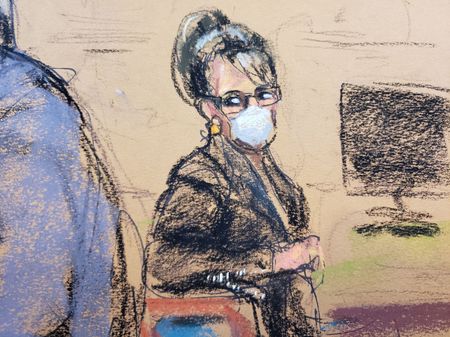NEW YORK (Reuters) – A judge said on Monday he will dismiss a defamation lawsuit by Sarah Palin, the former Alaska governor and 2008 Republican U.S. vice presidential candidate, against The New York Times.
Palin sued over a June 2017 editorial that incorrectly linked her to a January 2011 mass shooting where six people died and Democratic U.S. congresswoman Gabby Giffords was seriously wounded.
Here is a look at 10 key moments from the trial, which began on Feb. 3.
*During his opening statement, Palin’s lawyer Shane Vogt told jurors that his client was fighting an “uphill battle” to show the editorial reflected the Times’ knowledge it was false and its “history of bias” toward her and other Republicans.
*Times lawyer David Axelrod countered in his opening statement that the editorial sought to hold both Democrats and Republicans responsible for inflammatory rhetoric, and said the newspaper acted “as quickly as possible” to correct its mistake.
*Palin testified on the fifth and sixth days of the trial. She told the jury she felt “powerless” after the editorial was published, likening herself to the biblical underdog David.
“I wanted to raise my head and try to get the word out that there were untruths printed once again,” Palin said. “I knew I was up against Goliath, and I felt collectively the people were David, that I was David.”
*Palin also described her suffering following the editorial.
“It’s hard to lay your head on a pillow and have a restful night when you know that lies are told about you, a specific lie that was not going to be fixed,” she said. “That causes some stress that anyone would feel.”
*The former New York Times editorial page editor James Bennet testified on the fourth and fifth days of the trial. He said he did not mean to cause Palin harm, and that the Times moved quickly to correct the editorial.
“We don’t promise to be perfect, we promise to try our damnedest to be perfect, and when we’re not, we try to fix it,” he said.
*Ross Douthat, a conservative New York Times columnist, testified that he had emailed Bennet less than an hour after the editorial was published that it appeared without basis to link Palin to the Giffords shooting.
“If there was a correction that needed to be made, the sooner the better,” he said.
*Linda Cohn, a now-retired Times editor, testified that Bennet was initially surprised after the editorial was published that some readers were upset with its wording.
“There was a general sense of ‘oh no,'” she said.
*Kenneth Turkel, another lawyer for Palin, in his closing argument accused the Times and Bennet of turning a “blind eye” to the facts, and essentially accusing Palin of inciting the murder of six people.
“All they had to do is care the slightest bit,” he said. “All they had to do is dislike her a little less, and we’re not sitting here today.”
*Turkel also noted that Palin had withstood many attacks in the nine years since she had entered the national spotlight, something that Palin acknowledged in her own testimony came with the territory.
“She’s got thick skin,” Turkel said. “This one crossed the line.”
-Axelrod said in his closing argument that no one criticized Palin over the editorial, undermining her claim that the editorial hurt her reputation. He labeled the error an “honest mistake” several times.
“The evidence does not support branding him (Bennet) with a scarlet ‘D’ for defamation for the rest of his life,” Axelrod said.
(Reporting by Jonathan Stempel in New York; Editing by Cynthia Osterman)





